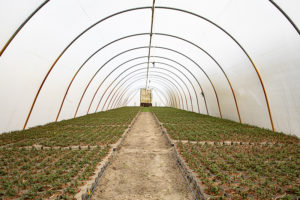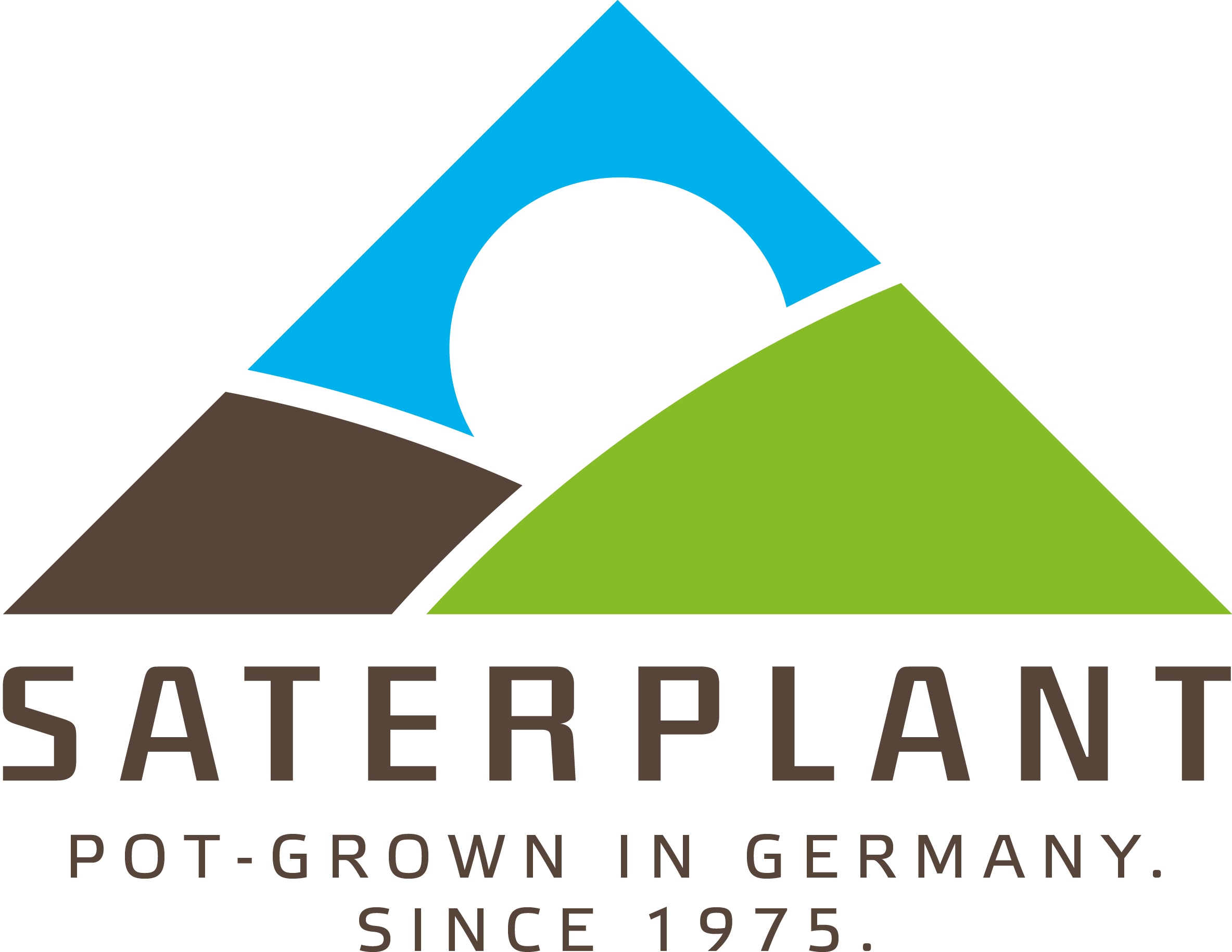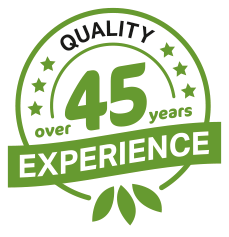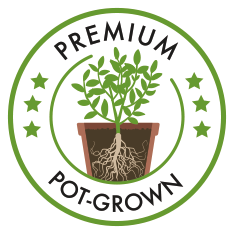The pot is the house and the substrate is the refrigerator of your plant.
The following is only referring to pot-grown plants. We will not go into inferior quality pot-pressed plants.
The pot of your plant contains the substrate that provides the plant with nutrients. Here at Saterplant® this consists of a proportion of white peat soil, wood fibres and mixed peat fibres. The substrate contains the nutrients your plant needs to take root, grow and thrive. The more substrate a hedge plant has, the stronger, more robust and denser in growth it will turn out to be.
Remember: as a rule, your hedge plant is already planted as a small cutting in substrate in the pot in which you will later purchase it.
The pot in turn serves as a house: it limits the plant’s root growth. A larger pot offers plenty of space and freedom to establish many root tracts, through which the plant can ensure a firm hold and a perfect supply of nutrients, first in the pot and later in your garden. In addition, according to the horticultural rule of thumb, a wider pot always produces a wider plant.
Now, thanks to modern agricultural chemistry, it is easily possible to ‘dope’ plants through massive supplementary fertilization and pushing them quickly to easily sellable heights, even in a small pot with a weak root system and little substrate as a nutrient buffer. Therefore, you can, for example, be offered a Thuja Smaragd with a growth height of 50-70 cm on the internet in a 2L pot but elsewhere in a 3L pot. In the sales photos, both look attractive to amateur eyes, and with the smaller pot you even save on the sales price because the plants could be placed closer together in the nursery and it also takes up less space when shipped.
So is the smaller pot a good tip for bargain hunters?
We strongly advise against buying hedge plants in insufficiently sized pots. You will get a weak, susceptible product which, in the best case scenario, will take a long time to ‘get back on its feet’ in your garden and then grow more slowly than usual, while in the worst case scenario, you can expect some of your plants to die.
Plants need space – in two ways
Real, sustainable plant quality is determined in two dimensions:
- The plant had enough space in the pot to grow strong roots and enough substrate to be perfectly supplied with sufficient nutrients at all times
- The plant did not stand close to other plants in the nursery during the crucial growth periods, but was ‘kept in check’ in technical terms, i.e. had space around it to get enough sunlight for beautiful growth. Browning at the bottom of the plant can be an indicator of too little sunlight due to being in a confined space.
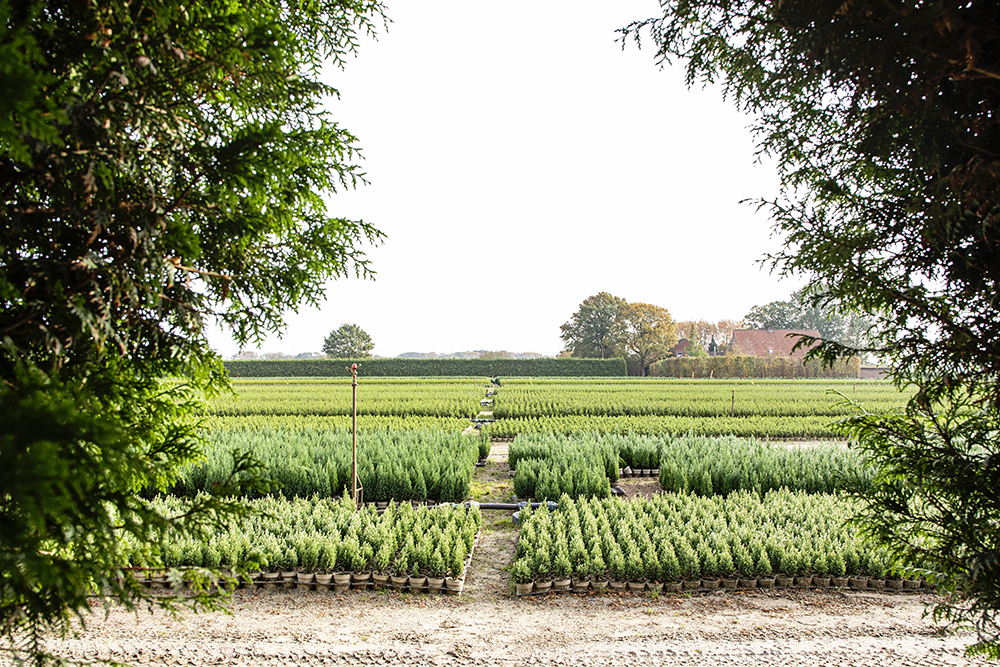
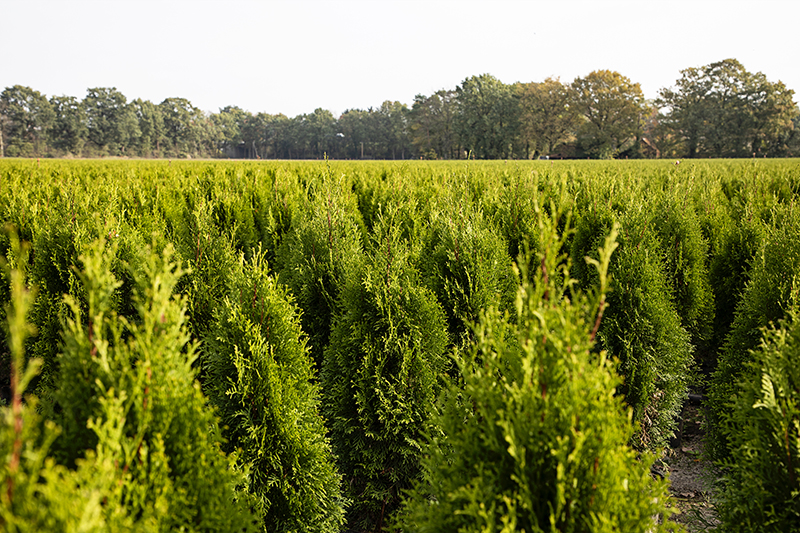
Plants need space – in two ways
At Saterplant®, we have developed a guide scale from 45 years of experience to ensure abundantly rooted, robust and resistant plants with dense, beautiful growth. When buying plants, go for branded goods from perfectly managed cultures – from master gardeners. You can rely on Saterplant®.
Incidentally: from a volume of 2L upwards, experts no longer speak of a pot, but of a container.

